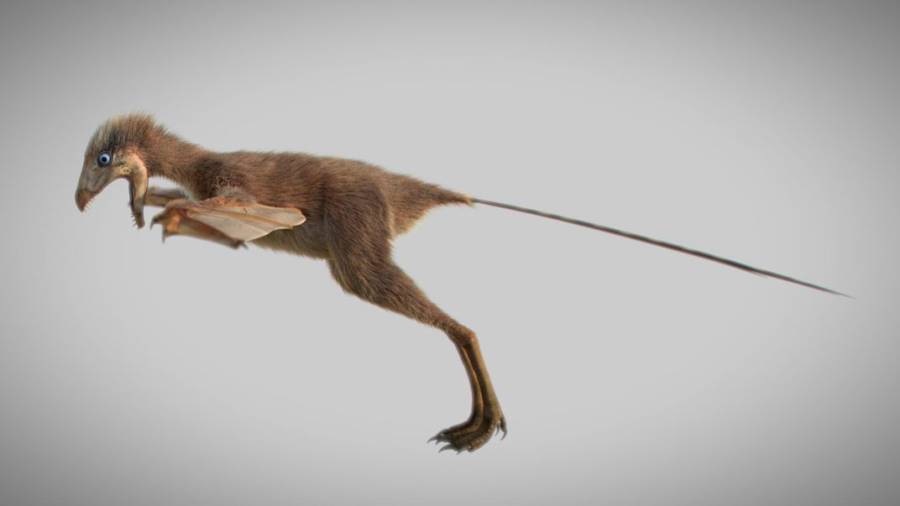The first discovery of a bat-like winged dinosaur was in 2015, but scientists had dismissed the initial finding because it was so bizarre.

Min Wang/Institute of Vertebrate Paleontology and Paleoanthropology/Chinese Academy of SciencesThe omnivorous Ambopteryx longibrachium dinosaur had membranous flaps like a bat.
Chinese scientists have discovered a bat-like winged dinosaur that took to the skies some 163 million years ago. The finding is the second such specimen that scientists have found with membranous wings. These two discoveries seem to confirm the notion that there was an entirely different evolutionary track for airborne dinosaurs than previously thought.
But the significance of this discovery was not obvious when the team first collected the fossils from Jurassic-age rocks in Liaoning Province in China.
“I thought it was a bird,” Min Wang, a vertebrate paleontologist at the Chinese Academy of Sciences, told the New York Times. But upon closer inspection, Wang and his team discovered distinct characteristics of the specimen that confirmed it was indeed a dinosaur and not a bird.
The fossils were in such perfect shape that researchers found another surprise from the prehistoric remains.
Dubbed Ambopteryx longibrachium, this airborne creature had soft tissue around its arms and torso. This tissue formed flaps of skin that most likely were similar to that of a bat. Both the pterosaur and modern bat mammals were previously the only lineages that were thought to develop membranous flaps like this to fly.
The study stated that the Ambopteryx’s membranous wings were supported by elongated forelimbs that likely represented a short-lived evolution of flying behavior. Ultimately, feathered wings dominated the later evolution of Paraves or avian dinosaurs.
Furthermore, inside of the Ambopteryx’s body were gizzard stones, or tiny pebbles to help crush food. Scientists also found fragments of bones. The winged dinosaur’s teeth suggested that it and its relatives were most likely omnivorous dinosaurs, which meant that they had a diverse diet depending on what they could find.
The exciting new study was published in the journal Nature.
There was only one other case where researchers found a similar dinosaur species with bat-like wings. In 2015, Chinese scientists unearthed the remains of what they later named “Yi qi,” which showed a similar wing construction, although the finding was so unorthodox that scientists were skeptical.
“I think that if you had asked a paleontologist to just draw up some kind of fantasy dinosaur, you know, a lot of us never would have come up with something that was that weird,” said Stephen Brusatte, a vertebrate paleontologist at the University of Edinburgh, who was not involved in the new research of Ambopteryx.
But after paleontologists have discovered another bat-winged dinosaur, it “pretty much seals the deal that there was this group of dinosaurs with bat-like wings,” Brusatte explained. He added that the Ambopteryx proves that there was more than one branch on the dinosaur family tree that gave rise to flying dinosaurs.
Now scientists are hoping to continue the study to figure out how exactly the Ambopteryx navigated the skies. Paleontologist and co-author Jingmai O’Connor said that the dinosaur’s flying method was likely “halfway between a flying squirrel and a bat,” gliding from tree to tree in search of food. But scientists cannot be sure just yet.
The discovery of the new winged species has added to the ongoing debate about how dinosaurs first began to evolve and use wings.
But according to Smithsonian Magazine, Wang and his colleagues consider the two small dinosaur species an “experiment” in the origins of flight since no dinosaurs like Yi or Ambopteryx have been found from the later Cretaceous period.
Now that you’ve learned about the bat-winged dinosaurs that roamed earth 163 million years ago, read about the 26,000-pound dinosaur that was once the biggest creature to walk planet earth. Then, learn about the discovery of the largest human-sized dinosaur footprint ever found.





